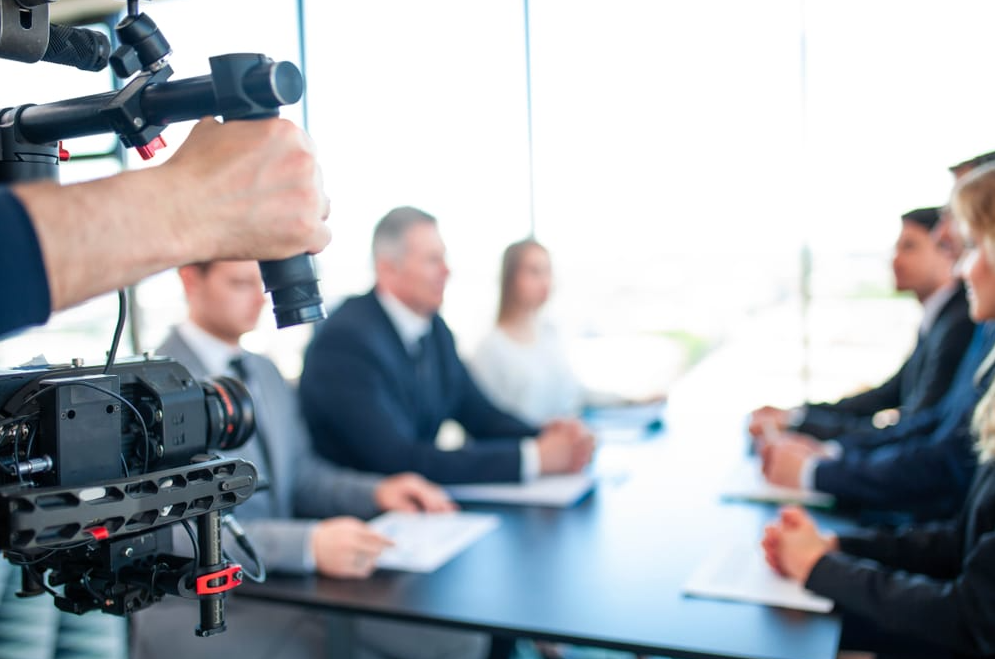Legal Videography: Changing the Way Evidence is Captured and Provided
Legal Videography: Changing the Way Evidence is Captured and Provided
Blog Article
The Intricacies of Legal Videography and Its Role in Capturing Crucial Details for Evidential Purposes in the Legal Area
In the world of the legal field, the usage of videography has become a crucial tool for capturing the details and subtleties that can make or break a case. From documenting criminal offense scenes to videotaping witness testimonies, lawful videography plays a critical function in providing vital information with unmatched quality and precision. Past the surface level of just tape-recording occasions, there exists a labyrinth of complexities and factors to consider that should be navigated to make certain the admissibility and credibility of video proof. Understanding the technological facets, lawful needs, and strategic implications of lawful videography is important for attorneys seeking to utilize its complete capacity in reinforcing their cases.
Advancement of Legal Videography
How has lawful videography advanced within the lawful area over the years? Lawful videography has actually undergone a significant change, adjusting to the technological innovations and transforming demands within the legal profession. Lawful videography was primarily utilized for basic recordings of lawful process and depositions. Nonetheless, with the development of high-definition electronic cameras, progressed editing software, and online platforms, the function of lawful videographers has broadened to incorporate a more comprehensive series of solutions.

Moreover, the rise of online proceedings and remote depositions in recent times has more propelled the evolution of lawful videography, demanding videographers to adapt their skills to record procedures properly in an electronic environment (Legal Videography). On the whole, the evolution of legal videography has been marked by a shift towards more sophisticated technology, enhanced expertise, and a broader scope of services to satisfy the advancing demands of the legal field
Significance of High-Quality Video Footage
Top quality video in legal videography is necessary for precisely recording and providing visual proof in a trustworthy and expert way. The quality and information caught in high-grade footage can be crucial in legal procedures, enabling for a precise assessment of events, expressions, and details that may be pivotal to a situation. Juries, courts, and attorneys depend on visual proof to recognize complex scenarios, and poor-quality footage can result in misinterpretations or uncertainties about the credibility of the proof offered.
Additionally, top notch video footage can enhance the total discussion of proof, making it more persuasive and engaging. This can ultimately reinforce the reputation of the legal team providing the proof and raise the probability of a positive result for their customers.
Techniques for Effective Documents
To guarantee complete and accurate paperwork in legal videography, employing effective techniques is vital in capturing critical details and evidence. One important technique is to very carefully prepare the shots prior to shooting. This includes recognizing the instance complexities, determining key people, and identifying one of the most essential aspects to tape-record. Furthermore, utilizing numerous camera angles can provide a detailed view of the scene, helping in offering a comprehensive and clear account of events. It is critical to preserve a constant hand while filming to stay clear of unstable video that may compromise the top quality and professionalism and reliability of the video clip. Additionally, making certain proper illumination is essential for catching clear visuals and preventing shadows that might cover important details. Finally, maintaining a detailed log of all video footage, including timestamps and summaries of the material, is crucial for easy referral and retrieval during lawful proceedings. By implementing these techniques, legal videographers can improve the quality and integrity of their documents, ultimately enhancing the indicative worth of their recordings.
Admissibility and Authentication of Video Evidence
In the world of legal videography where precise documents is essential, the admissibility and authentication of video clip evidence play a crucial role in figuring out the reliability and credibility of documented products. For video evidence to be admissible, it should satisfy legal requirements such as importance, credibility, and dependability.
Authentication involves confirming that the video clip has actually not been meddled with or edited to misrepresent realities. Strategies such as digital trademarks, metadata analysis, timestamps, and specialist look at here statement can be utilized to authenticate video evidence. Ensuring that the video was tape-recorded under correct problems and that the tools used was working appropriately enhances its authenticity. Inevitably, the admissibility and authentication of video proof are essential in supporting the honesty of lawful process and ensuring that justice is served based on trustworthy details.
Enhancing Legal Techniques With Video Technology

These repairs can assist clarify elaborate details, timelines, and spatial connections, assisting in the comprehension of intricate legal issues. In general, the combination of video clip modern technology into lawful techniques not just enhances the presentation of proof however additionally reinforces the persuasiveness and reliability of legal useful reference arguments.
Final Thought
In conclusion, lawful videography plays a critical role in recording crucial details for indicative functions in the lawful field. Through the advancement of technology and strategies for effective paperwork, high-grade video can enhance legal strategies and provide valuable proof in court. Legal Videography. Making certain the admissibility and authentication of video proof is crucial to utilizing video innovation efficiently in legal proceedings
Understanding the technical aspects, lawful needs, and tactical effects of legal videography is important for legal specialists looking for to utilize its full possibility in boosting their instances.
Legal videography was largely used for basic recordings of lawful proceedings and depositions.Utilizing video innovation in lawful techniques can significantly boost the effectiveness of legal specialists in presenting evidence and disagreements in a convincing and engaging fashion. Overall, the integration of video innovation into legal methods not just boosts the presentation of evidence but likewise enhances the persuasiveness and reputation of lawful debates.
In conclusion, lawful videography plays an essential function in capturing necessary information for indicatory objectives in the lawful area.
Report this page